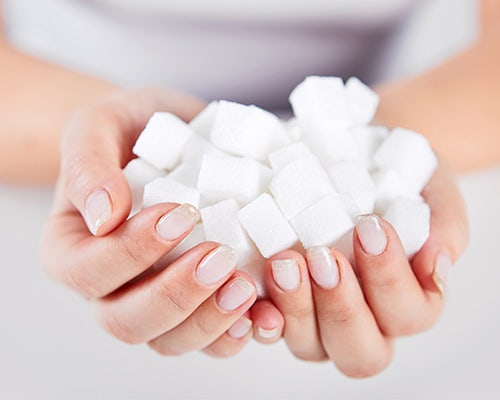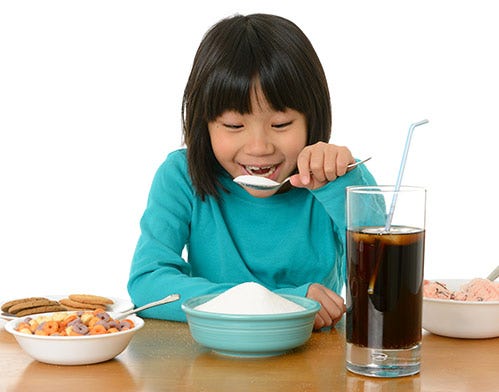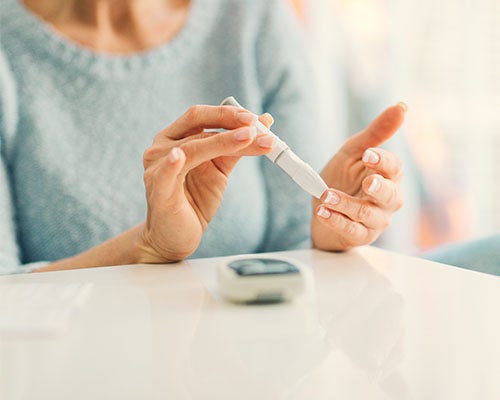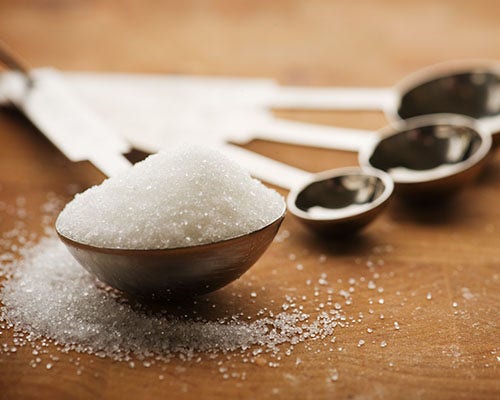High-Sugar Foods to be on the Lookout For
- 8/30/17

Quite a few people can attest to having a strong affinity for sugary foods, or a “sweet tooth.” However, for most Americans, regular consumption of hidden sugar alone far exceeds a reasonable amount to be considered healthy. According to the USDA, Americans consume on average about 20 tablespoons of added sugars daily, compared to the American Heart Association’s recommended 6 teaspoons for women and 9 teaspoons for men. Over the course of a year, that is nearly 66 pounds of added sugar!
From causing harm to major organs to afflicting the skin and teeth, sugar consumption negatively affects the entire body, according to WebMD. Excessive sugar leads to additional insulin in the bloodstream, which stresses the arteries and circulatory system. This can eventually lead to cardiac damage and greater risk of heart disease, heart attacks and strokes. In addition, extra insulin caused by sugar taxes the pancreas, drastically increasing the risk of type 2 diabetes and kidney problems. Sugary sweets have also been linked to inflammation throughout the body, worsening joint pain and possibly contributing to the development of rheumatoid arthritis.
According to research from the University of California San Francisco, chronic consumption of too much added sugar also disrupts the natural balance of hormones that are responsible for vital functions in the body, which can lead to obesity, among many other health issues.
The list can go on and on for all the negative health effects from added sugar consumption in foods. Fortunately, awareness of the hidden sources of added sugar can help curb intake and the subsequent ill effects on health. It is also important to recognize the difference between added sugar and natural sugars, like those found in fruits and dairy products. Unlike added sugars, foods that contain natural sugars provide nutritional value, not just empty calories, so the sugar content cannot be compared in the same way. Further, they are metabolized differently, according to Healthline.
One tablespoon is equal to about 12 grams of sugar, so it doesn’t take long to reach the daily maximum allotment of added sugar. Be sure to check the nutritional labels on these foods:
MSN Health offers a simple and easy tip for checking ingredients of all packaged foods. If sugar is one of first three ingredients listed, put it back! In addition, check labels for alternate names for added sugar, including dextrose, fructose, glucose, isoglucose, maltose, and sucrose, says the NHS.
From causing harm to major organs to afflicting the skin and teeth, sugar consumption negatively affects the entire body, according to WebMD. Excessive sugar leads to additional insulin in the bloodstream, which stresses the arteries and circulatory system. This can eventually lead to cardiac damage and greater risk of heart disease, heart attacks and strokes. In addition, extra insulin caused by sugar taxes the pancreas, drastically increasing the risk of type 2 diabetes and kidney problems. Sugary sweets have also been linked to inflammation throughout the body, worsening joint pain and possibly contributing to the development of rheumatoid arthritis.
According to research from the University of California San Francisco, chronic consumption of too much added sugar also disrupts the natural balance of hormones that are responsible for vital functions in the body, which can lead to obesity, among many other health issues.
The list can go on and on for all the negative health effects from added sugar consumption in foods. Fortunately, awareness of the hidden sources of added sugar can help curb intake and the subsequent ill effects on health. It is also important to recognize the difference between added sugar and natural sugars, like those found in fruits and dairy products. Unlike added sugars, foods that contain natural sugars provide nutritional value, not just empty calories, so the sugar content cannot be compared in the same way. Further, they are metabolized differently, according to Healthline.
One tablespoon is equal to about 12 grams of sugar, so it doesn’t take long to reach the daily maximum allotment of added sugar. Be sure to check the nutritional labels on these foods:
- A 6-ounce container of yogurt can contain from 27-31 grams of sugar. Instead, opt for a plain yogurt and add your own fruit toppings or a natural sweetener like raw honey or maple syrup.
- Dried and packaged fruits. It is a common misconception that all fruits are healthy options. Once processed, some dried fruits can contain up to 24 grams of sugar—which is equivalent to candy! Many other canned fruits and single-serve cup packages use heavy, sugar-laden syrups as their base. Always choose fresh organic fruits to avoid added sugar.
- Salad dressing. With sugar typically added to boost flavor, many creamy salad dressings can be a sneaky source of sugar, with about 6 grams for just two teaspoons. With the average person adding a sizable dollop or drizzle, sugar content can add up quickly. Instead, choose full-fat variety dressings with no added sugar (using less should be more satiating to not add too many extra calories), or use oil and vinegar.
- Pasta sauce and ketchup. To soften the natural acidity of tomatoes, sugar is commonly added to marinara sauces and ketchup. Several top brands have about 8-10 grams per serving. Instead, swap the sauce for crushed canned tomatoes, and choose another condiment besides ketchup, like classic yellow mustard, which is sugar-free.
- Beverages. Sodas and fruit juices are the most obvious sugar offenders, but sports and energy drinks are likely a surprising source of sugar for many people. While the average 12-ounce can of soda contains 39 grams and a cup of fruit juice contains 23 grams, a 32-ounce sports drink that replenishes electrolytes also racks in 56 grams of sugar (21 grams per serving). According to a review of 197 energy drinks, more than three quarters would receive a ‘red’ label for high sugar using Food Standards Agency guidelines, with up to 20 teaspoons of sugar per serving.
MSN Health offers a simple and easy tip for checking ingredients of all packaged foods. If sugar is one of first three ingredients listed, put it back! In addition, check labels for alternate names for added sugar, including dextrose, fructose, glucose, isoglucose, maltose, and sucrose, says the NHS.




